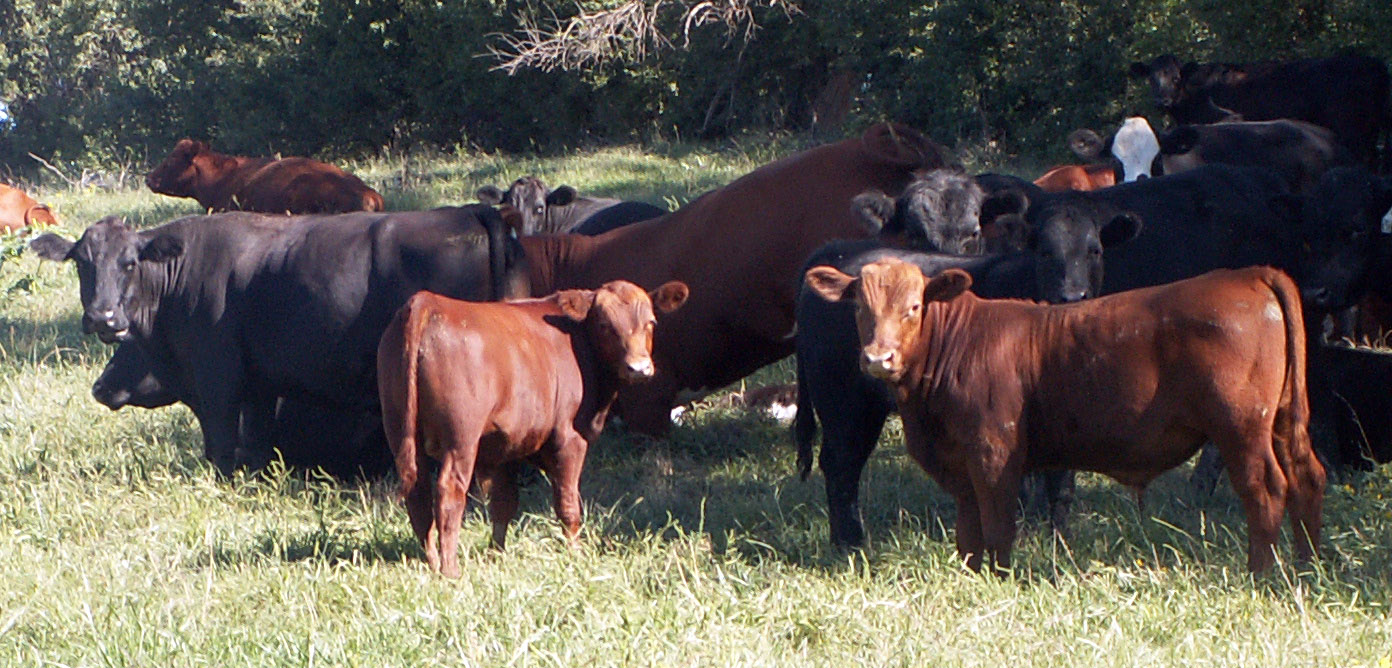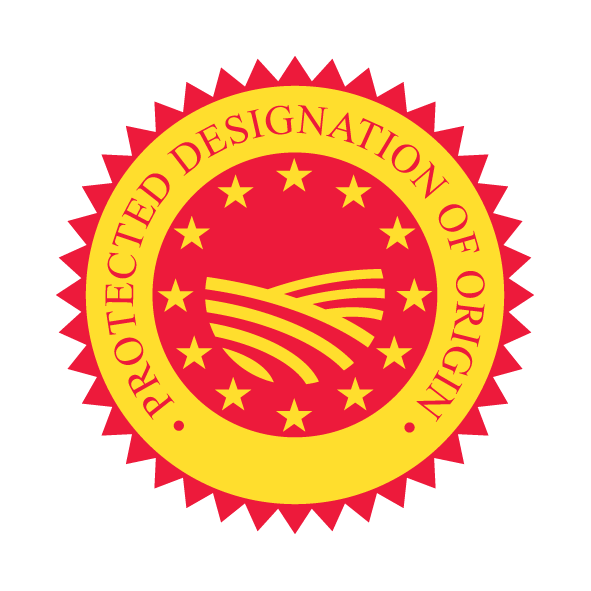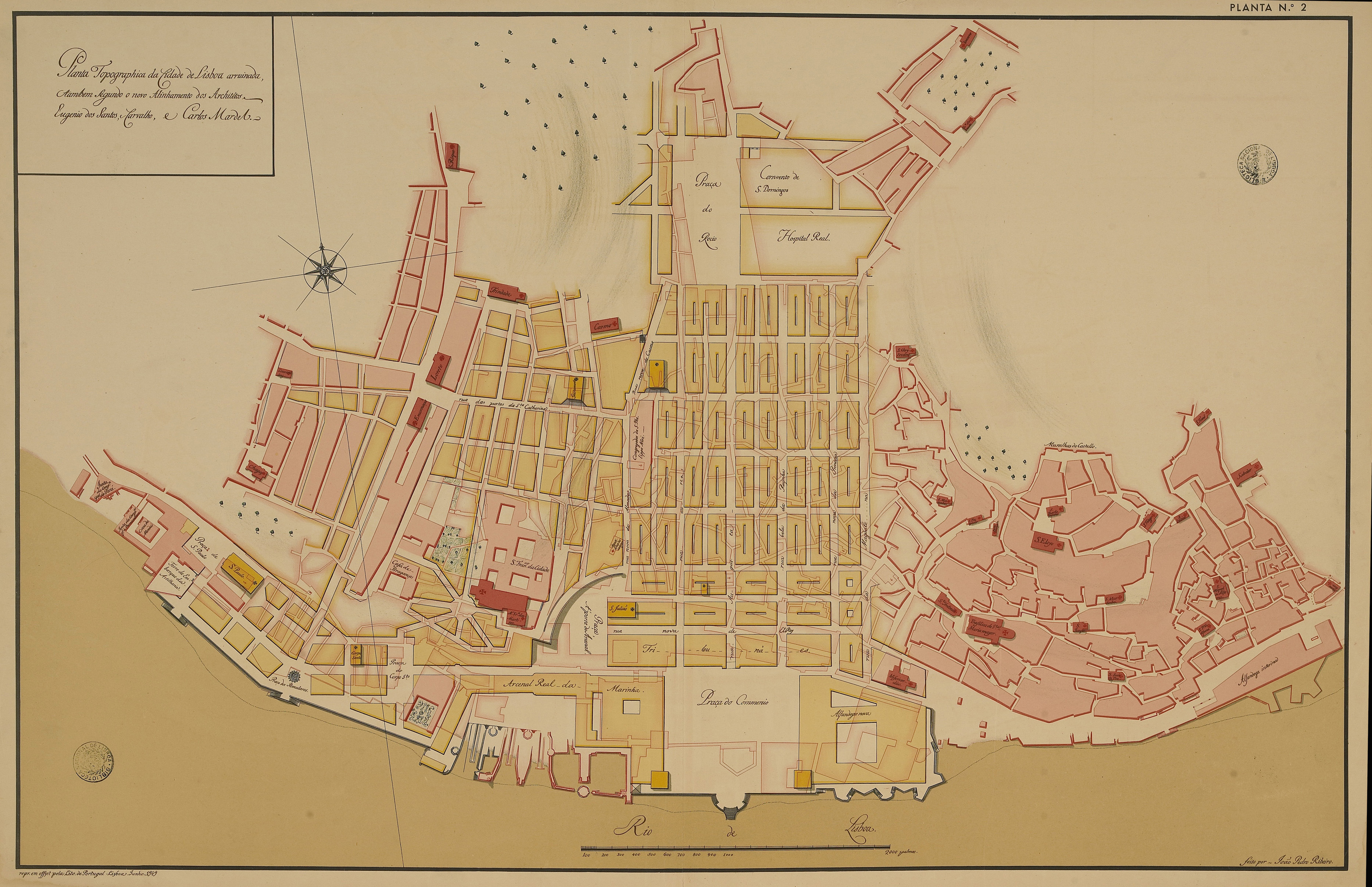|
Carne Cachena Da Peneda
The Cachena is a breed of triple-purpose cattle from Portugal and Galicia, Spain. In Portugal, there is also the similar but larger cattle breed known by the name, Barrosão or Barrosã. Cachena and Barrosã are sometimes considered variants of the same race. Ancestry and description Cachena cattle were bred from brown and yellow local cattle in Northern Portugal and Galicia (Spain). They are light brown to yellow with dark brown nuances around the withers. The mucosas are unpigmented except of the dark muzzle. The wide and long horns are lyre-shaped. Cachena cattle are one of the smallest cattle breeds of the world: The height must be equal or less than 110 cm (both in cows and bulls, with the last ones, being normally taller). Bulls weigh around 550 kg, cows 390 kg. Distribution Cachena cattle were originally bred in the Vila Real District, an agriculturally poor district in the extreme north of Portugal and later were exported to Galicia (Spain). Climat ... [...More Info...] [...Related Items...] OR: [Wikipedia] [Google] [Baidu] |
Portuguese Products With Protected Designation Of Origin
Portuguese may refer to: * anything of, from, or related to the country and nation of Portugal ** Portuguese cuisine, traditional foods ** Portuguese language, a Romance language *** Portuguese dialects, variants of the Portuguese language ** Portuguese man o' war, a dangerous marine cnidarian that resembles an 18th-century armed sailing ship ** Portuguese people, an ethnic group See also * * ''Sonnets from the Portuguese'' * "A Portuguesa", the national anthem of Portugal * Lusofonia * Lusitania Lusitania (; ) was an ancient Iberian Roman province located where modern Portugal (south of the Douro river) and a portion of western Spain (the present Extremadura and the province of Salamanca) lie. It was named after the Lusitani or Lusita ... * {{disambiguation Language and nationality disambiguation pages ... [...More Info...] [...Related Items...] OR: [Wikipedia] [Google] [Baidu] |
Cattle Breeds
List of cattle breeds — Over 1000 breeds of cattle are recognized worldwide, some of which adapted to the local climate, others which were bred by humans for specialized uses. Cattle breeds fall into two main types, which are regarded as either two closely related species, or two subspecies of one species. ''Bos indicus'' (or '' Bos taurus indicus'') cattle, commonly called zebu, are adapted to hot climates and originated in the tropical parts of the world such as India, Sub-saharan Africa, China, and Southeast Asia. ''Bos taurus'' (or ''Bos taurus taurus''), typically referred to as "taurine" cattle, are generally adapted to cooler climates and include almost all cattle breeds originating from Europe and northern Asia. In some parts of the world further species of cattle are found (both as wild and domesticated animals), and some of these are related so closely to taurine and indicus cattle that interspecies hybrids have been bred. Examples include the Dwarf Lulu cattle of ... [...More Info...] [...Related Items...] OR: [Wikipedia] [Google] [Baidu] |
Protected Designation Of Origin
The protected designation of origin (PDO) is a type of geographical indication of the European Union and the United Kingdom aimed at preserving the designations of origin of food-related products. The designation was created in 1992 and its main purpose is to designate products that have been produced, processed and developed in a specific geographical area, using the recognized know-how of local producers and ingredients from the region concerned. The list below also shows other geographical indications. Features The characteristics of the products protected are essentially linked to their terroir. The European or UK PDO logo, of which the use is compulsory, documents this link. European Regulation 510/2006 of 20 March 2006 acknowledges a priority to establish a community protection system that ensures equal conditions of competition between producers. This European Regulation is intended to guarantee the reputation of regional products, adapt existing national protections t ... [...More Info...] [...Related Items...] OR: [Wikipedia] [Google] [Baidu] |
Agriculture In Portugal
Agriculture in Portugal is based on small to medium-sized family-owned dispersed units; however, the sector also includes larger-scale intensive farming export-oriented agrobusinesses backed by companies (like Grupo RAR's Vitacress, Sovena, Lactogal, Vale da Rosa, Companhia das Lezírias and Valouro). The extent of cooperative organisation has been reaching a greater importance with globalization. Portugal produces a wide variety of products, including green vegetables, rice, corn, wheat, barley, olives, oilseeds, nuts, cherries, bilberry, table grapes and edible mushrooms. Forestry has also played an important economic role among the rural communities and industry (namely the paper industry that includes Portucel Soporcel Group, the engineered wood industry that includes Sonae Indústria, and the furniture industry that includes several manufacturing plants in and around Paços de Ferreira, the core of Portugal's major industrial operations of IKEA). In 2013, th ... [...More Info...] [...Related Items...] OR: [Wikipedia] [Google] [Baidu] |
Beef
Beef is the culinary name for meat from cattle (''Bos taurus''). In prehistoric times, humankind hunted aurochs and later domesticated them. Since that time, numerous breeds of cattle have been bred specifically for the quality or quantity of their meat. Today, beef is the third most widely consumed meat in the world, after pork and poultry. As of 2018, the United States, Brazil, and China were the largest producers of beef. Beef can be prepared in various ways; cuts are often used for steak, which can be cooked to varying degrees of doneness, while trimmings are often ground or minced, as found in most hamburgers. Beef contains protein, iron, and vitamin B12. Along with other kinds of red meat, high consumption is associated with an increased risk of colorectal cancer and coronary heart disease, especially when processed. Beef has a high environmental impact, being a primary driver of deforestation with the highest greenhouse gas emissions of any agricultural product. ... [...More Info...] [...Related Items...] OR: [Wikipedia] [Google] [Baidu] |
Cachena
The Cachena is a breed of triple-purpose cattle from Portugal and Galicia, Spain. In Portugal, there is also the similar but larger cattle breed known by the name, Barrosão or Barrosã. Cachena and Barrosã are sometimes considered variants of the same race. Ancestry and description Cachena cattle were bred from brown and yellow local cattle in Northern Portugal and Galicia (Spain). They are light brown to yellow with dark brown nuances around the withers. The mucosas are unpigmented except of the dark muzzle. The wide and long horns are lyre-shaped. Cachena cattle are one of the smallest cattle breeds of the world: The height must be equal or less than 110 cm (both in cows and bulls, with the last ones, being normally taller). Bulls weigh around 550 kg, cows 390 kg. Distribution Cachena cattle were originally bred in the Vila Real District, an agriculturally poor district in the extreme north of Portugal and later were exported to Galicia (Spain). Climate is ... [...More Info...] [...Related Items...] OR: [Wikipedia] [Google] [Baidu] |
Peneda-Gerês National Park
The Peneda-Gerês National Park ( pt, Parque Nacional da Peneda-Gerês, ), also known simply as Gerês, is a national park located in northern Portugal. Created in May 1971, it is the oldest protected area and the only national park in Portugal. It covers an area of , occupying the Districts of Viana do Castelo, Braga, and Vila Real and bordering the Spanish Baixa Limia – Serra do Xurés natural park to the north, with which forms the UNESCO biosphere reserve of Gerês-Xurés. Peneda-Gerês was given its name by its two main granite massifs, the Serra da Peneda and the Serra do Gerês which, with the Serra Amarela and the Serra do Soajo, constitute the park's highest peaks. On the other hand, the precipitous valleys, crossed by high flowing streams, host lush temperate broadleaf and mixed forests of oak and pine, being one of the last strongholds of the typical Atlantic European flora of Portugal, contrasting with an evolving Mediterranean biome. The park is also home to arou ... [...More Info...] [...Related Items...] OR: [Wikipedia] [Google] [Baidu] |
Province Of Ourense
Ourense (in Spanish, ''Orense'') is a Spanish province, in the southeastern part of the autonomous community of Galicia. It is bordered by the provinces of Pontevedra to the west, Lugo to the north, León and Zamora, (which both belong to Castile and León) to the east, and by Portugal to the south. With an area of 7,278 square km., it is the only landlocked province in Galicia. The provincial capital, Ourense, is the largest population centre, with the rest of the province being predominantly rural. Denomination ''Ourense'' (in Galician) is the official name adopted by Parliament in Spain, according to Law 2/1998. Geography Ourense is surrounded by mountains on all sides. These mountains historically isolated the province from the more populated Galician coast. Until a highway was built in recent years linking Ourense with Vigo in the west and Benavente in the east, the only quick way for people to enter or leave the province was by railway. The principal river system is ... [...More Info...] [...Related Items...] OR: [Wikipedia] [Google] [Baidu] |
Cattle
Cattle (''Bos taurus'') are large, domesticated, cloven-hooved, herbivores. They are a prominent modern member of the subfamily Bovinae and the most widespread species of the genus ''Bos''. Adult females are referred to as cows and adult males are referred to as bulls. Cattle are commonly raised as livestock for meat (beef or veal, see beef cattle), for milk (see dairy cattle), and for hides, which are used to make leather. They are used as riding animals and draft animals ( oxen or bullocks, which pull carts, plows and other implements). Another product of cattle is their dung, which can be used to create manure or fuel. In some regions, such as parts of India, cattle have significant religious significance. Cattle, mostly small breeds such as the Miniature Zebu, are also kept as pets. Different types of cattle are common to different geographic areas. Taurine cattle are found primarily in Europe and temperate areas of Asia, the Americas, and Australia. Zebus (also ... [...More Info...] [...Related Items...] OR: [Wikipedia] [Google] [Baidu] |
Baixa Limia-Serra Do Xurés Natural Park
The Baixa ''(Downtown)'' (), also known as the Baixa Pombalina (''Pombaline Downtown'') is a neighborhood in the historic center of Lisbon, Portugal. It consists of the grid of streets north of the Praça do Comércio, roughly between the Cais do Sodré and the Alfama district beneath the Lisbon Castle, and extends northwards towards the Rossio and Figueira squares and the Avenida da Liberdade (Lisbon), a tree-lined boulevard noted for its tailoring shops and cafes. History The Pombaline Baixa is an elegant district, primarily constructed after the 1755 Lisbon earthquake. It takes its name from Sebastião José de Carvalho e Melo, 1st Marquis of Pombal, the prime minister to Joseph I of Portugal from 1750 to 1777 and key figure of the Enlightenment in Portugal, who took the lead in ordering the rebuilding of Lisbon after the 1755 earthquake. The Marquis of Pombal imposed strict conditions on rebuilding the city, and the current grid pattern strongly differs from the o ... [...More Info...] [...Related Items...] OR: [Wikipedia] [Google] [Baidu] |
.jpg)





